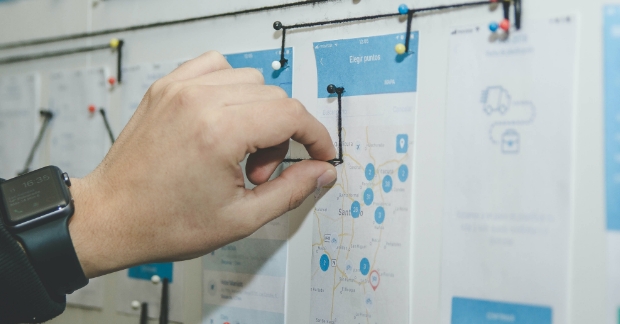Workflows are, hands-down, my favorite tool offered in HubSpot Marketing Pro. The workflows tool automates your sales, marketing and service processes. While most B2B tech companies utilize workflows exclusively for communicating with prospects and customers, workflows are also a powerful tool to streamline and optimize internal processes!
Continue reading to learn three HubSpot workflows you should implement ASAP, and the five biggest mistakes tech marketers make when developing workflows!
The Three Workflows to Implement in HubSpot
1. Prospect/Customer Nurturing
Most tech marketers are utilizing workflows to send emails to prospects and customers. However, more often than not, we find that tech companies aren't effectively using workflows for lead and customer nurturing. Typically, we find that tech companies use workflows as drip campaigns and essentially use the tool to pre-schedule emails to their entire database over a course of time. While it's great to produce content and engage with your database regularly, this strategy does nothing to move the needle and refine your sales process.
In order to use your email strategy as a sales tool, you must send the right people the right piece of content at the right time. With workflows, not only can you send content to segmented lists but you can also create if/then branches to send enrolled contacts emails based on their behavior.
Depending on how engaged someone is with your content, you can send them more or less information. This helps to move engaged leads through the sales cycle and weeds out the contacts in your database that aren't ready to buy! This way, your salespeople have a clear understanding of which contacts are Sales Qualified Leads (SQLs) and can focus their time and energy on those opportunities!
2. Webinar and Event Campaigns
Many of our clients utilize webinars for their events. Our tech clients set up workflows that are date-specific to remind registered attendees of pertinent information leading up to the event.
We suggest the following pre-event email cadence to attendees at a minimum:
- Confirmation email upon registering for the event
- One month before the event
- Two weeks leading up to the event
- One week before the event
- One day before the event
- The day of the event — With webinars, we highly suggest sending an email two hours before the webinar goes live to remind attendees to join!

Additionally, on the internal side of events, we have had clients who utilize workflows to set up notifications for presenters to submit slides or follow up with updates about the event. A cool feature I encourage clients to use in workflows is the text message feature. A client of ours recently held a webinar that was a panel discussion and set up the workflow so that all presenters received a text reminder 15 minutes before the webinar started!
3. Internal Communications
Did you know that workflows can be beneficial for internal communications? You can set workflows to send reminders to salespeople to follow up with leads after events. Or, you can schedule sales tasks to follow up with a lead after a week has passed since sending a proposal. Additionally, if you have routine tasks you do every week, month, or every few months, we highly suggest you develop workflows to ensure they’ll actually get done.
For example, many of our clients have automated internal emails and tasks set every three-to-six months to clean up their databases, every week to monitor social media likes and comments and every few weeks to review workflows. Ask yourself what are the processes we do regularly and how can we automate them so they don't fall through the cracks!
The Five Biggest Mistakes Tech Marketers Make When Implementing Workflows
HubSpot workflows are extremely powerful and beneficial if used correctly. We often find that tech marketers make some critical mistakes when implementing workflows. Below, learn the five most common blunders tech companies make when building workflows so you can avoid them!
1. Not Suppressing Lists
One of the most important and overlooked tools in workflows is list suppression. Did you know you can suppress certain contacts from receiving your workflows? The last thing you want to do is spam your contacts with tons of emails because you have them enrolled in multiple workflows! By suppressing certain contacts from your workflows, you are making sure that your brand comes off as helpful and not pushy!
2. Failing to Think of What Happens After a Contact Hits That Checkered Flag
When a contact hits that checkered flag at the end of your workflow, it is important to think of what happens next. Should contacts be enrolled in another workflow? Should your sales representative enroll them in a sales sequence for further nurturing? The last thing you want is for a contact to get regular messaging from your company for months only to then go two months hearing nothing. That's definitely not a good look!
3. Not Segmenting Content
If you are trying to speak to everyone, you are resonating with no one. It is essential that you send the right content to the right contacts at the right time. For example: let's say you work at XYZ Technologies and your sales reps typically have two points-of-contact with prospects: a Purchasing Manager and a Chief Technology Officer (CTO). It goes without saying but the Purchasing Manager and CTO have completely different motivations in working with your company.
The Purchasing Manager will want to hear the hard facts: the price of your product/service, the longevity of your company, and the delivery speed of your product/service. The CTO, on the other hand, is fascinated by innovation and quality. The CTO will want to see case studies, white papers, videos and technical content. By segmenting your workflows, you will be able to better resonate with your leads through the sales cycle.
4. Lack of If/Then Branches in Workflows
If/Then Branches allow you to tailor your content flow to individuals enrolled in a workflow. For example, if you have a contact who is reading all your emails, you can send them more premium content like demo videos or white papers.
On the other hand, if you have another contact who isn't reading your emails, you can program your workflow to send them less content. This will help you get a clearer picture of what contacts in your database are sales-qualified leads and which contacts really aren't that into you.
5. Not Creating Workflows for Sales Automation
Workflows are an amazing tool to automate your sales processes and give your sales team better insight into their prospects and customers so they can sell smarter, not harder. Below are a few sales automation workflows our clients love:
- Page View: Alerts salespeople when contacts have viewed webpages or landing pages. This is especially beneficial for high-value pages, such as a pricing page!
- Contacts who submit forms or download pieces of content
- Lead Assignment: You can automate the lead assignment when a contact submits a form. Have multiple salespeople? Not to worry—you can set your workflows to automatically rotate leads between sales reps!
- Follow-up after sending a proposal or filling out an RFQ, RFP, etc.: You can set up internal email reminders, tasks, alerts via the HubSpot mobile app, or event texts!






